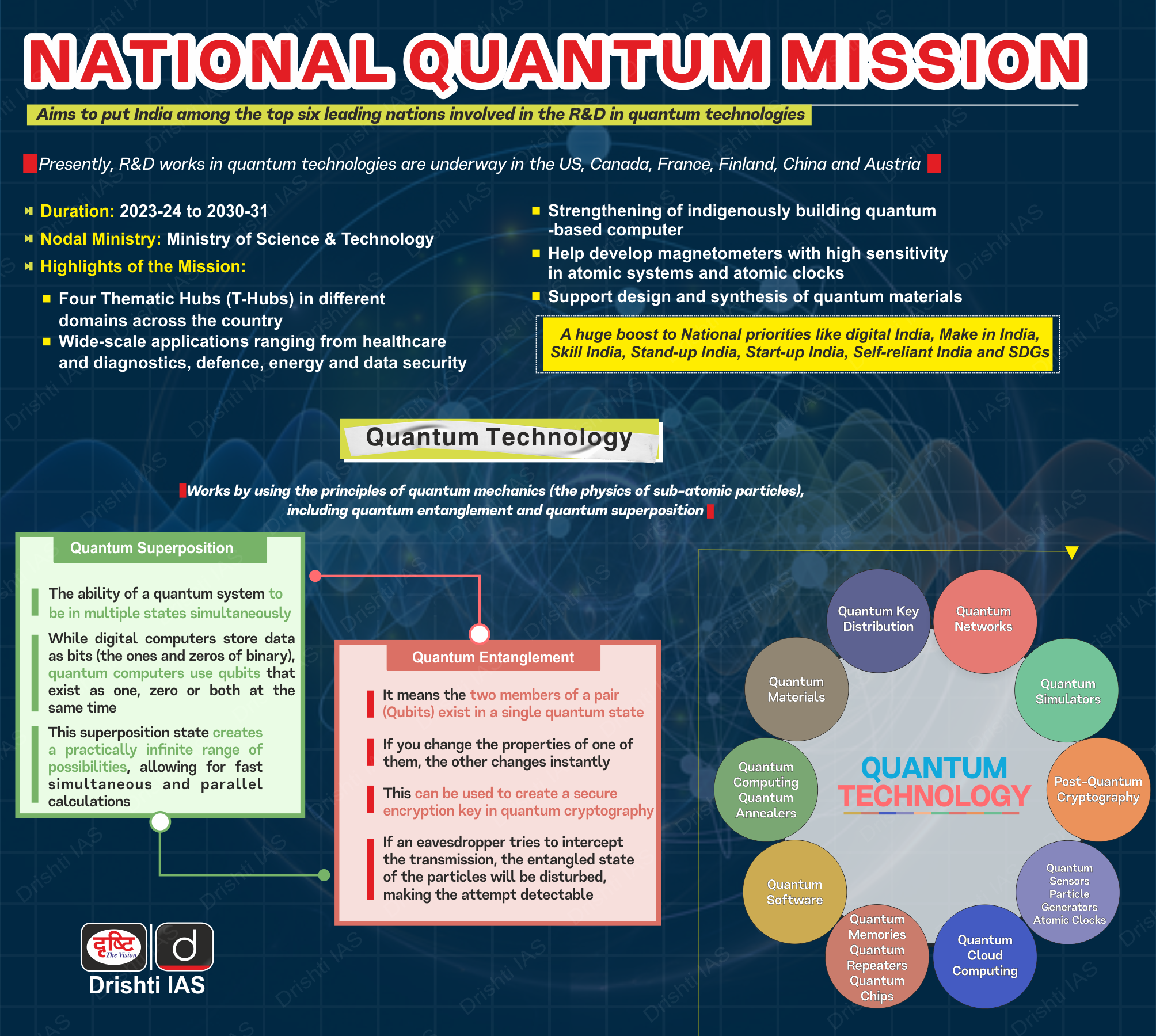Material for Energy Harvesting and Power Generation | 26 Jul 2024
Why in News?
Recently, scientists have come up with a recent study that explores the electronic mechanisms governing chemical bonding in a new class of materials called incipient metals, with a focus on Metavalent Bonding (MVB) within a single 2D layer of Group IV chalcogenides.
What are the Key Highlights of the Study?
- About:
- The study was conducted at Theoretical Sciences Unit at Jawaharlal Nehru Centre for Advanced Scientific Research (JNCASR).
- Findings:
- The study discovered that group IV chalcogenide materials can transition from amorphous to crystalline forms in less than 100 nanoseconds when heated or cooled.
- Significance:
- The new material can have applications in various fields like efficient energy harvesting, and power generation.
- Also, the research connects with the emerging field of quantum materials which will help in India's national mission on quantum technology.
- Related Terms:
-
Incipient Metals:
- They exhibit electrical conductivity similar to metals, with high thermoelectric efficiency characteristic of semiconductors, and unusually low thermal conductivity, creating a triad of properties that cannot be explained by traditional chemical bonding concepts.
- Chalcogenides:
- Chalcogenides are compounds containing at least one chalcogen elemental ion (such as Sulphur, Selenium, and Tellurium) and at least one metallic element.
- Group IV chalcogenides possess intriguing properties making them suitable for technological applications.
- Chalcogenides are important in energy harvesting and power generation due to their high electrical conductivity and effective thermal-to-electrical energy conversion.
- Chalcogenides are already used in computer flash memories, leveraging their ability to change optical properties during transitions between crystalline and amorphous states.
- Chalcogenides are compounds containing at least one chalcogen elemental ion (such as Sulphur, Selenium, and Tellurium) and at least one metallic element.
- Metavalent Bonding:
- The bonding, which defies the classical octet rule (the tendency of atoms to prefer to have eight electrons in the valence shell) in chemistry, has properties of both the bonding present in metals and those found in glasses.
-
UPSC Civil Services Examination, Previous Year Question (PYQ)
Prelims
Q. What is the difference between a CFL and an LED lamp? (2011)
- To produce light, a CFL uses mercury vapour and phosphor while an LED lamp uses semi-conductor material.
- The average life span of a CFL is much longer than that of an LED lamp
- A CFL is less energy-efficient as compared to an LED lamp.
Which of the statements given above is/are correct?
(a) 1 only
(b) 2 and 3 only
(c) 1 and 3 only
(d) 1, 2 and 3
Ans: (c)
Q. With reference to solar power production in India, consider the following statements: (2018)
- India is the third largest in the world in the manufacture of silicon wafers used in photovoltaic units.
- The solar power tariffs are determined by the Solar Energy Corporation of India.
Which of the statements given above is/are correct?
(a) 1 only
(b) 2 only
(c) Both 1 and 2
(d) Neither 1 nor 2
Ans: (d)

